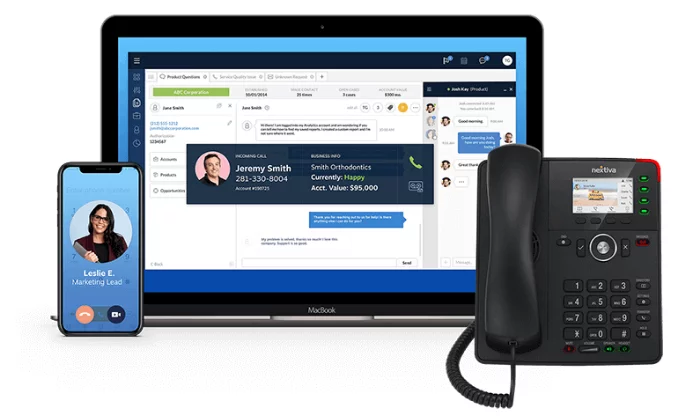8 Proven Tactics to Get More Organic Traffic Through On-page and Off-page SEO
Organic traffic is the lifeblood of any online business, and understanding how to increase it through SEO is an essential skill for digital marketers. With the right strategies in place, you can get more organic search engine traffic to...

Organic traffic is the lifeblood of any online business, and understanding how to increase it through SEO is an essential skill for digital marketers. With the right strategies in place, you can get more organic search engine traffic to your website and boost your conversions.
In this post, we’ll explore proven tactics that will help you get more organic traffic through on-page & off-page SEO. We’ll cover topics such as optimizing meta tags, improving content quality, building backlinks strategically, and more.
By following these suggestions, you should be able to maximize your efforts and generate higher volumes of organic web traffic over time.
Let’s get started.
1. Optimize Meta Tags
Meta tags are important elements of your website that help search engines understand what your content is about and how to rank it in SERPs.
Make sure you include the right keywords in your meta titles, descriptions, and headings to give search engine bots a better idea of your content. If you’re not sure which keywords would work best for your website, use a keyword research tool to find popular terms related to your industry.
Keep title tags short and relevant (within 60 characters), and include the main keyword at least once (better if in the beginning).
To write compelling meta descriptions, make sure to include a call to action, the main keyword at least once, and keep it between 150-160 characters.
2. Improve Content Quality
Content is a big part of SEO and should be your number-one priority if you want to get more organic traffic.
High-quality content that solves user queries scores higher with search engines than thin or spun content, so make sure to invest in creating content that adds value.
There are four different user intents that you should be aware of when creating content. These include:
“Informational” intent, which is for users who are looking to learn something;“Transactional” intent, which is for those that want to buy a product or service;“Navigational” intent, which is used to help people find a specific website or resource;“Investigational” intent, which is used to help people research a topic.Focus on long-form pieces that are well-researched and organized using headings and subheadings.
Also, include visuals such as images or videos to break up the text and add more engagement.
3. Build Quality Backlinks
Backlinks are one of the most important search engine ranking factors and a key driver of organic traffic.
When another website links to yours, it’s known as a backlink. The more high-quality backlinks you have pointing to your website, the higher its authority, and the better its chances of ranking in SERPs.
To get quality backlinks, create great content that people will want to link to. You can also use outreach tactics such as guest blogging and broken link building to acquire links from other websites.
4. Optimize Site Speed & Structure
Site speed is a critical factor in search engine rankings, so it’s important to ensure your website loads quickly.
Run a speed test on your website to identify any issues and implement strategies to improve performance. This can include optimizing images, minifying CSS & JavaScript files, using a CDN, and more.
It’s also important to have an effective site structure that’s easy for search engine bots to crawl and index. Use breadcrumbs, internal links, and an XML sitemap to create a clear path through your website and make it easier for search engines to understand the content within.
5. Leverage Schema Markup
Schema markup is a way of adding additional information to web pages that helps search engines understand the context more clearly. This can include anything from product prices to restaurant opening hours, and it’s essential for getting your content listed in SERPs.
Adding schema markup to your website is as easy as adding a few lines of code to each page, and there are plenty of online tools that make it easier.
6. Monitor Your SERP Rankings
It’s important to keep an eye on your website’s ranking in SERPs and analyze what you can do to improve it. You can use a tool such as SEMrush to track keyword rankings and identify any issues that might be affecting visibility.
You should also monitor the SERP landscape and identify any changes that could affect your website. This includes keeping an eye on competitors, checking for algorithm updates, and more.
7. Implement Technical SEO
Technical SEO involves optimizing the technical aspects of a website, such as redirects, crawling errors, sitemaps, indexing issues, and more.
Using a tool such as Screaming Frog can help you identify any issues that are affecting your website’s performance, and implementing fixes can have a big impact on organic search visibility.
8. Focus on Topical Authority
Topical authority is a measure of how knowledgeable and authoritative your content is in the eyes of search engines.
Creating content around specific topics and subtopics can help to establish topical authority, which can boost rankings for related keywords. Use tools such as Answer The Public or Ahrefs Content Explorer to identify potential topics that you could write about.
Be sure to stick with that specific subject you choose until you covered every aspect. This will help you establish yourself as an authority on that particular topic and increase your chances of ranking for related keywords.
Final Word
Getting more organic traffic is a complex task, and it takes time and effort to make the necessary improvements.
However, following the tactics outlined in this post will give you a good foundation for achieving success with SEO.
Good luck!

 Tekef
Tekef 
































